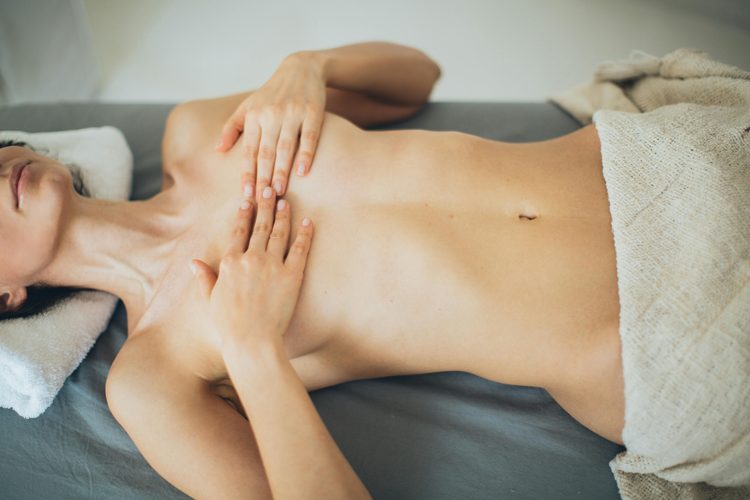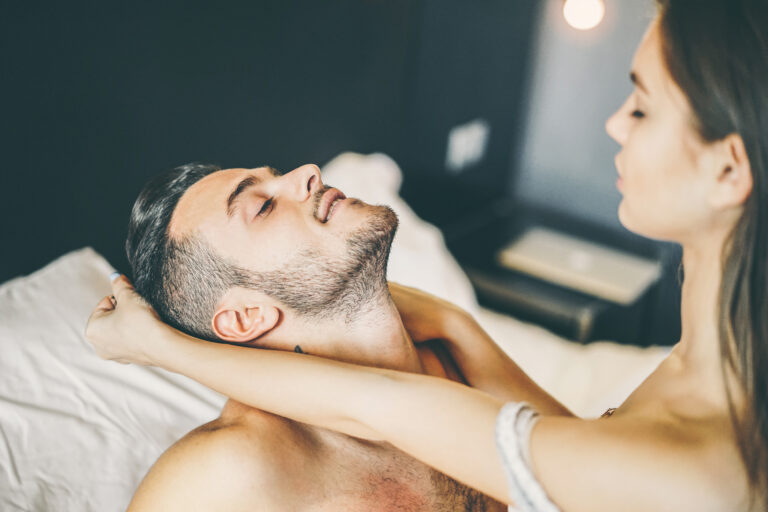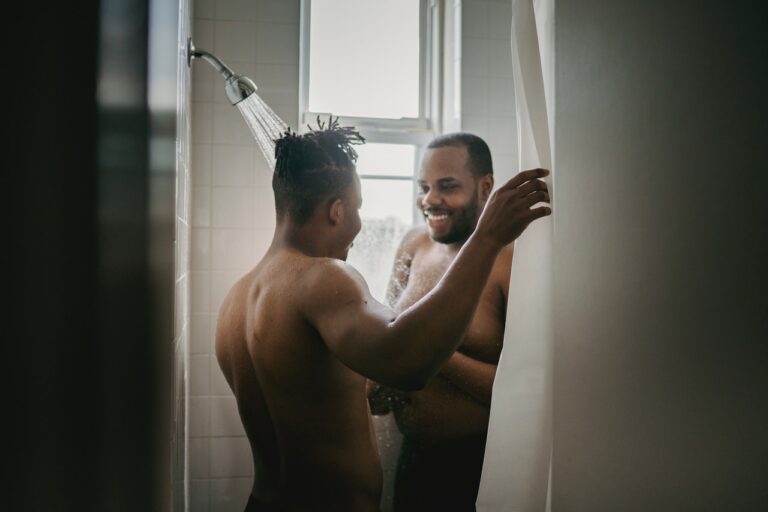Give Your Breasts Some TLC – How To Examine Your Breasts To Prevent Cancer
1 October 2024
Be honest: How much attention have you paid to your breasts recently? And we don’t mean buying a well-fitted bra or checking them out in the mirror. Giving your breasts the attention they need means feeling them for potential changes, which can help you to detect breast cancer early. If you’re like the vast majority of women, you probably don’t check your breasts very often, if at all. But self-examinations are the best way to identify any changes early, which can stop cancer in its tracks. We want to help, so we’ve put together this guide to explain everything you need to know about checking your breasts effectively.
- Why checking your breasts is so important
- Successful self-examinations – guaranteed
- When to check your breasts
- A step-by-step guide to checking your breasts
- How do lumps and changes feel in the breast?
Why checking your breasts is so important
Did you know that over 50% of all breast cancers are initially detected by the women themselves? Regular self-checking enables you to detect any chances and report them to your doctor. Checking your breasts is important at all stages of life, as breast cancer can affect women of any age. The earlier you start checking, the better you’ll get to know your breasts and the better you’ll be able to judge whether any changes are normal for you or not. So, are you ready to get started? Read on to find out exactly how to check your breasts.
Successful self-examinations – guaranteed
- When to check your breasts
If you’ve never checked your breasts before, now’s the time to start. Experts advise women to check their own breasts once a month, and you can use your monthly cycle to work out the best time to do it. Choose a day after your period has started and make a note of it so that you can check your breasts again on the same day each month. The best time to carry out a self-examination is between day three and seven of your cycle, with day one of your cycle being the day your period starts. Before your period, your breasts can be tense and sensitive to pressure, and they might contain more water than usual due to hormonal fluctuations. This can affect how your breasts feel when you check them. A few days after the start of your period, your breasts are soft and easier to check. Once you’ve set a date, it’s time to get checking with our step-by-step guide.
- A step-by-step guide to checking your breasts
- Check your breasts in the mirror: Start by standing in front of a mirror and looking at your breasts. Move your arms to see if you spot any changes in the way your breasts move. Place your hands on your hips, raise your arms up and check for any skin changes, nipple inversion, indentations or unevenness. You should also lean forward with your arms dangling down to see if there are any unusual changes in this position. Carrying out self-checks regularly will help you get to know your breasts and enable you to recognize any changes that you need to discuss with your doctor.
- Feel your breasts: It’s important to stand up when you check your breasts. Lift one breast with your hand and use your other hand to gently palpate it. Use forward stroking motions. Apply gentle pressure to your nipples and check for any discharge; if you spot any, this is definitely something to discuss with your doctor. Then move on to check your breast using a circular motion. Start under your armpit, as sometimes lumps that require investigation can be hiding under there. Work toward your nipple from the outside of your breast, drawing a spiral pattern with your hand. Once you’re done, repeat the process on the opposite breast and armpit. When you’ve thoroughly checked both breasts standing up, lie down on your back and repeat the same process.
Our top tip: Standing in the shower is the perfect opportunity to check your breasts. Using shower gel will make it easier to feel your breasts and detect any changes.
Other things to remember when checking your breasts: Young women in particular can have very pronounced glandular tissue, which can sometimes feel like a lump. Breast tissue naturally has a lumpy feel, so don’t panic if you feel something. If you check your breasts frequently, you’ll get to know what healthy breast tissue feels like and it’ll be easier for you to detect any change that could be a concern.

How do lumps and changes feel in the breast?
So, you’ve got the technique down – but how do you know which changes you need to report to a doctor?
- If you feel any firm knots or lumps that don’t move, make an appointment with your doctor.
- If you find a lump larger than 1 cm in diameter in your armpit, discuss it with a specialist.
- If your nipples or other areas of skin are inverted or dented when you move your arms, this might need looking at.
- If your breasts have changed shape or size, ask your doctor for advice.
- If your breast is itchy or appears red, there could be cause for concern.
- If your breast feels taut or tense, let your doctor know.
- If the texture of the skin on your breasts has recently changed, this can also be a warning sign that needs further investigation.
- If your breast isn’t as easy to move around as it was, this could also indicate a change.
- If you experience pain when you apply pressure to a specific area, ask your doctor for advice.
Not all changes, irregularities or lumps will necessarily mean breast cancer. The main thing is to speak to your doctor about anything that seems unusual to you!
To mark Breast Cancer Awareness Month, we’re focusing on the topic of breast cancer and raising awareness around prevention throughout October. So examine your breasts regularly to maximize your chances of detecting cancer early.
Image sources: pexels-anntarazevich-5234231 ; pexels-elly-fairytale-3865551


